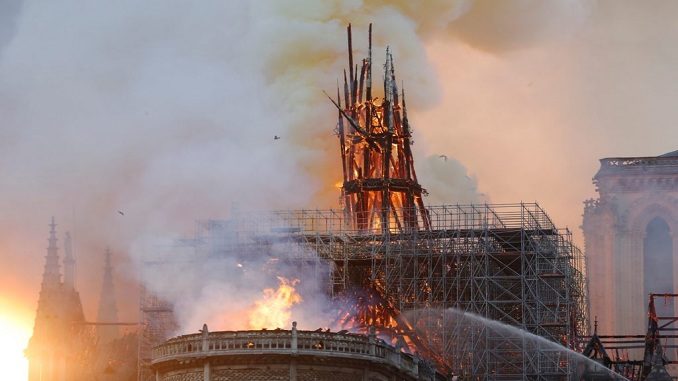
The April fire that engulfed Notre-Dame contaminated the cathedral site with clouds of toxic dust and exposed nearby schools, day care centers, public parks and other parts of Paris to alarming levels of lead, The New York Times reported.
The lead came from the cathedral’s incinerated roof and spire, and it created a public health threat that stirred increasing anxiety in Paris throughout the summer.
Five months after the fire, the French authorities have refused to fully disclose the results of their testing for lead contamination, sowing public confusion, while issuing reassuring statements intended to play down the risks.
Their delays and denials have opened the authorities to accusations that they put reconstruction of the cathedral – which President Emmanuel Macron has pledged to complete in five years – ahead of the health of thousands of people.
A comprehensive investigation by The New York Times has helped fill out an emerging picture of a failed official response. It found significant lapses by the French authorities in alerting the public to health risks, even as their understanding of the danger became clearer.
The April 15 blaze nearly destroyed the 850-year-old cathedral and brought immediate scrutiny onto whether adequate fire protections had been in place to safeguard a gem of Gothic architecture visited by some 13 million people a year.
Millions around the world watched in horror as the cathedral’s roof and spire succumbed to the flames that night and collapsed. But the billowing smoke carried its own hidden danger: massive quantities of lead, according to test results in confidential reports and others released by the government.
The Times’ investigation drew on confidential documents, including warnings by labor inspectors, a police report and previously undisclosed lead measurements by the Culture Ministry. Two French news organizations, Mediapart and Le Canard Enchaîné, have also investigated the lead concerns.

Be the first to comment